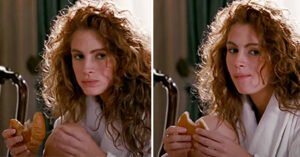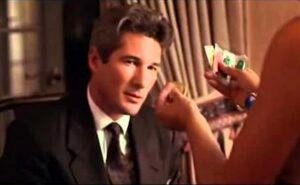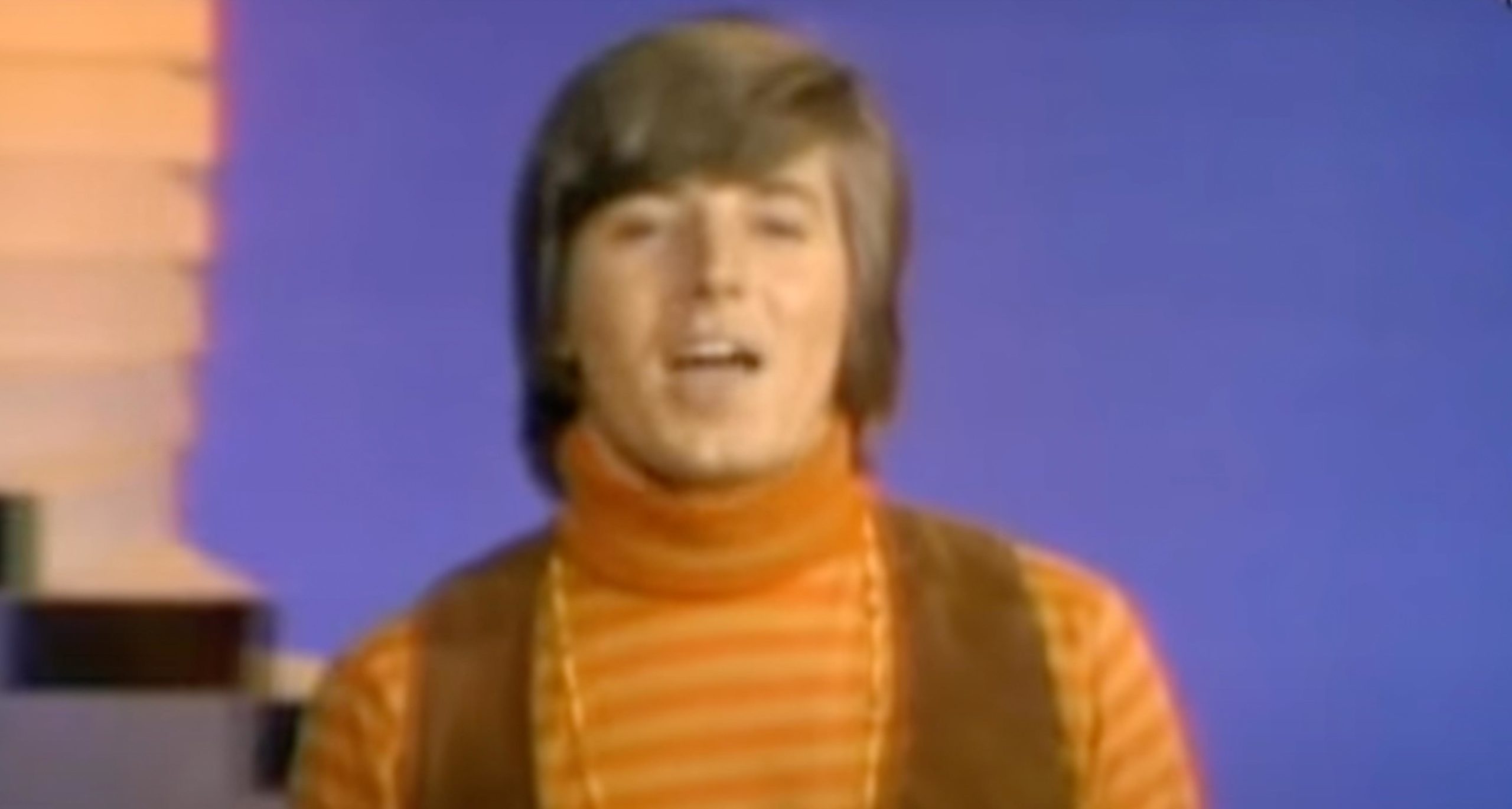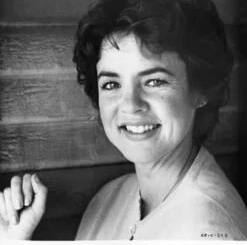Pretty Woman is one of those movies I can watch over and over — it never gets old or boring.
But considering how many times I’ve seen it, it’s surprising that I’ve never noticed these bloopers and mistakes that tell a different story about the film.
Disney changed everything
*Pretty Woman* became a romantic comedy that captured millions and launched Richard Gere and Julia Roberts to fame.

But that’s not how it was originally meant to be. The first screenplay was titled *3,000*, written by then-struggling screenwriter J.F. Lawton. The early draft dealt with much darker themes about social inequality and corporate greed.

However, everything changed when Disney took over. The company chose to downplay the themes of class and sex work in Los Angeles. Instead, Disney gave it a big budget and turned it more into a romantic comedy.
Al Pacino turned down the lead role
For me, it’s hard to imagine anyone but Richard Gere as Edward Lewis, the wealthy businessman from New York who hires Vivian (Julia Roberts) to be his escort for a week.
The casting process for *Pretty Woman* took longer than expected, with Al Pacino initially in the running for the role of Lewis. The famous actor even took part in a casting reading with Julia Roberts but ultimately decided to pass on the part.
Although he liked the script, Pacino never explained why he turned it down. Looking back, he has shown respect for Roberts, who was a relatively unknown actress at the time.
“I mean, you could tell at the reading that this was going to be good, that it would be a hit,” Pacino said.
He also mentioned: “And this girl was amazing. I asked Gary, ‘Where did you find this girl?’” (Gary being Gary Marshall, the film’s director). Pacino’s instincts were right, as Roberts’s outstanding performance would shape her career and the film’s legacy.
The croissant becomes a pancake
In the scene where Richard Gere’s character orders breakfast in the room, there’s a funny little detail you might not have noticed. It starts with Vivian enjoying a croissant while talking to Edward.
But then, in an instant, the croissant magically turns into a pancake.

How did that happen? According to director Garry Marshall, he liked Julia Roberts’ performance in the later takes, where she was eating a pancake instead of the croissant, so they decided to use that footage.
However, this caused a continuity issue. In the first shot with the pancake, Vivian takes a second bite, but in the next shot, the pancake only has one bite missing, and the bite marks are clearly different.
It’s clearly not the same pancake!
Truth behind the iconic dress
The careful attention to costume design might go unnoticed by most moviegoers. However, whether you notice fashion or not, it’s hard to miss the iconic red dress that Julia Roberts’ character wears in the film.
The red dress represents Vivian’s transformation and empowerment during a key scene in the movie when Roberts’ character joins Edward Lewis for a night at the opera.

Vogue described the dress as “eye-catching, incredibly sexy without losing any elegance.” The genius behind that stunning dress? The award-winning costume designer Marilyn Vance.
She created six fabulous outfits for Julia Roberts’ character, Vivian Ward, and also designed Richard Gere’s stylish looks.
For example, the charming brown-and-white polka dot dress Roberts wore to the horse race was made from old silk found in a small antique fabric shop in Los Angeles — talk about recycling in style! And those chic shoes? They were by Chanel.
Richard Gere’s tie
As for Gere’s wardrobe, it was a masterclass in color coordination, featuring brown, navy, and blue-gray suits, all designed by Vance.
Now, about that famous tie that Roberts takes from a store employee? According to Vance, it was “nothing special” and definitely not a designer piece.
She bought it in a Los Angeles shop for $48.
The tie appears several times in the film, and if you watch closely, you might notice that it mysteriously changes knots from time to time.
During the polo match, Edward wears a straight-collar shirt with the tie that Vivian gave him, knotted in a half-Windsor. But in a later scene, sharp-eyed viewers can see a subtle change — Edward’s collar has turned into a spread style, and the tie is now in a full-Windsor knot.
‘Obscene’ shopping spree
When Richard Gere shows Julia Roberts’ character the glamorous world of the rich, he takes her on a wild shopping spree down Rodeo Drive in Beverly Hills.
That afternoon shopping trip? It would have cost Gere’s character at least $30,000, according to designer Marilyn Vance.
Talk about a shopping spree on steroids! It’s like they were shopping with Monopoly money — no wonder Vivian was in a daze.
The ruby-and-diamond necklace was real
The jewelry Julia Roberts wore with her stunning red ball gown — a heart-shaped necklace made of rubies and diamonds — was valued at an incredible quarter million dollars. Yes, you heard that right.
According to movie trivia sites, this ruby-and-diamond masterpiece was the real deal. In fact, while filming, an armed security guard from the jewelry store responsible for this extravagant necklace stood watch behind the director.
Jewelry box scene was a practical joke
The scene where Richard Gere gives Julia Roberts the expensive necklace is not only one of the most romantic and iconic moments in movie history, but it also has a funny backstory.
Originally, it was meant as a playful prank for the film’s gag reel.
As you might remember, the jewelry box snaps shut on Julia Roberts’ fingers, causing one of the most genuine and charming laughs ever caught on film.
The real story behind the scene came from director Garry Marshall, who explained why he and Gere decided to play this trick on the young actress.
According to Marshall, Roberts, who was just 23 at the time, would sometimes show up on set a little sleepy after a late night out.
“I said, ‘Richard, you gotta wake her up a little, so when she reaches for the box, slam it.’ It was a soft box. I would never hurt her,” Marshall explained.
It wasn’t until the final stages of editing that they decided to keep the scene in the movie. “We put it in… and it became like the trademark of the movie,” Marshall said.
And just like that, an unscripted joke turned into cinematic magic.
Edward’s disappearing shoes
As mentioned earlier, there are some mistakes in *Pretty Woman* that aren’t easy to spot on the first viewing, but some keen viewers have noticed them.
For instance, when they leave the opera and head to the park, Vivian takes off Edward’s shoes. However, as he begins to lie down, the shoes magically reappear.
Money in the boot
Speaking of things on (or in) your feet, there’s a little mystery involving Vivian’s boots that you might have missed.
When Edward gives her $100 in the penthouse, she slips the cash right into her boot for safekeeping. But later, after room service arrives with champagne and she takes off her boots, the money has mysteriously disappeared.
Did the cash vanish into thin air, or is Vivian just really good at hiding things? Maybe those boots had a secret compartment, or perhaps the $100 simply didn’t want to stick around for the rest of the film…
Four colored condoms
When Vivian offers Edward a selection of colorful condoms, it seems they have a mind of their own.

Vivian starts with four neatly arranged options (not counting that fancy gold circle one). But in the next shot, the order has magically changed.
Richard Gere didn’t like his character
Richard Gere has certainly gained from the success of *Pretty Woman*—both in his career and his bank account. But he hasn’t always been fully positive about the film, especially regarding his character, Edward. At a film festival in Venice, Gere described Edward as “criminally underwritten.” He added, “Basically, he’s just a suit and a good haircut.”
One scene in particular seemed to bother Gere, where Edward plays the piano while Vivian moves closer. Reflecting on it, Gere sarcastically said, “I mean, no chemistry. This actor and this actress obviously had no chemistry between them… I haven’t seen that in a long time. That’s a sexy scene.”
Director Garry Marshall came up with the idea for the scene after asking Gere what he usually did late at night in a hotel. Gere remembered, “I said, ‘Well, I’m usually jet lagged, so I’m up all night. Usually, there’s a ballroom or a bar, and I’ll find a piano and play it.’” Marshall then suggested, “Well, let’s do something with that.”
So, the scene was mostly improvised, with Gere explaining: “He said, ‘Play something moody.’ I just started playing something moody that reflected this character’s interior life.”
Then, just as mysteriously, the original lineup of condoms snaps back in the third shot. It’s as if the condoms were having their own little dance routine behind the scenes.
More than just onscreen lovers
If you ask me, the chemistry between Julia Roberts and Gere in *Pretty Woman* was undeniable. But the sparks didn’t just fly when the cameras were rolling — they formed a close bond off-screen too.
In 2017, Gere shared that he still talks to Roberts “all the time,” and back in the day, they would chat “three or four times a day.”
You could say it was love at first sight, in a friendly sort of way.
Even in a fairytale romance, things don’t always go as planned. Maybe that’s what makes this movie so charming and keeps us watching it again and again, year after year.
Did we miss your favorite *Pretty Woman* blooper? Share it with us and keep the fun going!
This famous teen heartthrob is now 79 – try not to smile when you see him today.

One of the major musical stars of the 1960s and 1970s was Bobby Sherman. When I think back on it, I can hardly think of a single friend who didn’t at some point develop feelings for him.
Sherman sold millions of records, performed in front of thousands of people, put out several albums, and gained recognition as an actor. But eventually, at the height of his popularity, he made the decision to permanently leave the entertainment industry.
This, however, wasn’t because the 79-year-old thought his abilities had declined in any kind. No, he was fighting for something far more important: the preservation of life.
Everything you need to know about the renowned artist Bobby Sherman is provided here!

Bobby Sherman was raised in Van Nuys, a community next to Los Angeles, after being born in Santa Monica, California, on July 22, 1943.
Bobby Sherman’s childhood
He was reported to have mastered the trumpet by the age of 11, and subsequently the piano, trombone, piano, and of course, the guitar. Sherman went to Birmingham High School. He joined a band there and had a keen interest in singing. He apparently picked up the incredible skill of playing sixteen instruments throughout the years.
Following his high school graduation in 1961, Sherman enrolled in Woodland Hill, California’s Pierce College. A romance there would permanently alter the path of his life.
Sherman met his first lover while pursuing his studies in child psychology at Pierce College. She made the decision to bring him along to the cast party of The Greatest Story Ever Told one evening.
That was when Sherman had began to play music. Many folks in the San Fernando Valley knew he had a good voice because he sang with several bands there. Sherman so seized the chance to showcase his skills when he got to the party.
He subsequently recalled it, saying, “I was always the guy who had the guts to get up and sing in front of people.”

It probably helped a little bit because Bobby had party pals who were on stage with the band. Either way, he stood up in front of the group and sang What I’d Say by Ray Charles.
found during a party in Hollywood
As it was a Hollywood party, a number of entertainment celebrities were present. Sal Mineo, Natalie Wood, and Jane Fonda were a few of them.
They saw his talent after the show, and Mineo made the decision to mentor him.
“It was said by others, ‘Who’s handling you?’” Sherman remarked, “I had no idea what that meant.”
“Well, you know, I was a Van Nuys kid, and I was like, ‘What do they mean, handling me?’” I understood then that they intended representation.
He quickly became acquainted with Hollywood. Bobby Sherman was sent to an audition just three days later by an agent who had been tipped off by a partygoer. Bobby was cast as a featured character in Shindig, a new television series.
Even though Bobby was only in that capacity for two years, it was all he needed to leave his impact. At that point, he had become the national darling, and jobs were popping up out of every nook and cranny.
Sherman had guest appearances on a number of television programs after Shindig was canceled in 1966, including The FBI, Honey West, and The Monkees. Even though he had begun to gain attention in Hollywood, his major break came in 1968.
Bobby Sherman: acting, albums, songs, and music
Sherman spent two full years as the stuttering Jason Bolt in the television series Here Comes the Bridges. At the end of his run, his character stopped having stutters, and the show was eventually canceled.
Sherman discovered how well-liked Jason Bolt was by the public when he made an appearance at a Buffalo telethon. Suddenly, he was more than simply a rising star. Instead, he was now a celebrity.
Sherman told Tulsa World, “The show had just gone on the air, and we didn’t even have any records out yet.”
“Robert Brown, myself, and Greg Morris from Mission: Impossible from Here Come The Brides were requested to participate in the telethon, and things were going great until the fire marshal entered the room and announced, “We have a problem.” You must greet some individuals, so you’d better make your way to the second floor.
“They unlocked this window, and I peered outside, and the exit of this TV station was a sea of faces,” he continued. It was simply amazing. And that’s when I realized something was going on.
For Bobby, the ensuing year was “kind of limbo.” But that’s when he started getting interested in songwriting and experimented with his eight-track recording apparatus.
Bobby went on to become a professional singer, even if his voice wasn’t completely recognized at the time.
Bobby Sherman’s spouse, kids, and family
Sherman’s youthful fan base purchased millions of records between 1969 and 1971, during which time he released hits including Julie, Do Ya Love Me, Easy Come, Easy Go, and Little Woman.

One million copies of four distinct recorded albums and one million copies of six different single recordings were sold by him.
In 1971, he stated, “A song begins with an idea – one line.”I develop that into a full lyric. I then arranged the music to fit it.
Sherman starred in a number of guest roles after his 1970 and 1971 stint on the television show Getting Together, which was a spinoff of The Partridge Family and followed the lives of two songwriters.
Sherman initially married Patti Carnel in 1971, which also happened to coincide with his ascent to stardom. Christopher and Tyler, the couple’s two boys, were born.
Sherman made the decision to construct a scale replica of Disneyland’s Main Street in his garden because he wanted his children to grow up in an amazing environment. It took him almost two and a half years to finish the project, and it apparently cost him about fifteen thousand dollars to create.
The initiative wasn’t well received by everyone; his wife reportedly found the incessant hammering to be bothersome.
“I had no idea what home was,” Sherman said in a People interview. “She even threatened to kill me if I didn’t finish it.”

Bobby’s children served as the model for his new career in addition to inspiring him to construct his own portion of Disneyland.
Bobby rose to prominence on television before celebrities like Shaun Cassidy and even David Cassidy. Eventually, people like Donny Osmond “replaced” him.
But at the height of his popularity, millions of people loved Sherman, who was starring in popular TV shows and putting out hit tunes at the same time. Tiger Beat and Sixteen turned into two of his favorite records.
Sherman clarified that despite living the life of luxury that very few people get to experience, he would typically film five days a week and even have nighttime programs on the weekends. It’s safe to say that the hectic schedule had its effects.
“I didn’t know what home was for three years because it was so hectic,” he said to the Washington Post.
“I had no idea where I was, and I was lost.” I needed constant reminders. To be really honest, though, I had the best experience ever because of the fantastic concerts and amazing fans. Even though it was the classic love-in, I felt like I was totally taken advantage of.
Bobby Sherman gave up music to save people’s lives.
Then, in the middle of his enormous notoriety, Bobby made the abrupt decision to change careers to something completely different but equally significant.
In the end, he made the decision to turn around and give up his career in music and television in an effort to save lives.
Sherman’s former wife Patti was terrified of blood, and he was deeply involved in his children’s upbringing. Accidents happen frequently, as anyone who has reared children will attest, and Christopher and Tyler frequently fell and hurt themselves.
These falls occasionally resulted in minor cuts and scrapes as well as bleeding knees. Sherman made the decision to enroll in certain classes in order to better manage these kinds of circumstances. After taking an introductory course on first aid and CPR, he moved on to volunteer as an emergency medical technician.
“I rescued the life of a small 5-year-old girl on the very first call. Indeed, that is the most amazing feeling, I thought to myself. In an interview from 1994, Bobby recounted.

Sherman completed more training and went on to work for the Los Angeles Police Department as a first aid instructor for officers.
Emergency medical technician Bobby Sherman
Bobby was sworn in as a police officer in 1992 and appointed chief medical training officer for the Los Angeles Police Department. In the field, he gave birth to five children, and in 1994, he bravely faced hardship.
Sherman was awakened by an earthquake at his Encino, California, home on January 17, 1994. Rather than taking cover, he made the decision to hop in his truck and drive directly to the epicenter.
While some needed first aid, others there needed advise. Either way, Bobby’s expertise and presence were required.
Even though Bobby’s profession choice put him in danger and exposed him to many challenging circumstances, at his core he was still an entertainer and had many of the endearing traits from his days in the business. In fact, he ran across a few of his former admirers on the field.

He used to tell a tale about how, as a teen idol, his celebrity followed him around when he went on fire department paramedic rescue calls.
signed letters to patients
Bobby told The Times, “We were working on a bleeding woman who had passed out on one call in Northridge.”
Her spouse was staring at me nonstop. He exclaimed, “Look, honey, it’s Bobby Sherman!” at the end. The woman started as she came to. “Oh great, I must look like a mess,” she exclaimed. She appeared fine, so I reassured her not to worry.
Bobby kept using his improvised studio to record music for movies and TV series over the years. In 1997, he made his final appearance on television when he starred in an episode of Fraiser.
He participated in the “Teen Idol Tour” in the late 1990s with Peter Noone, Davy Jones, and Micky Dolenz from the Monkees. But he then made the decision to officially leave the entertainment industry.
Sherman thanked his supporters for everything and said it was difficult to maintain the success.
“My life’s work and accomplishments can be attributed to the blessings bestowed upon me by my fans.” The celebrity told Tulsa World, “It’s stayed with me, so I can have the opportunity to do things that I really love doing.”
Bobby Sherman’s current net worth is as follows.
Sherman said, “I don’t think there’s anything I would change, other than maybe being a little bit more aware of [the success], because I probably could’ve enjoyed the fun of it a little more.” It required a lot of labor. There were many tears, sweats, and bloodsheds. But the best of times was had by all.
In 2011, Bobby Sherman married Brigette, his second wife, and the two of them are still together today. They established The Brigitte and Bobby Sherman Children’s Foundation, a youth facility in Ghana devoted to fusing education and music, the same year they got married.
Bobby is 79 years old today. Still, I think you’ll all agree that he looks a much like himself because he still has a lot of his signature style!
Bobby Sherman was a fantastic actor and performer, and those wonderful years will always be missed!
To honor the legendary vocalist, kindly encourage your friends and family to read this article on Facebook!



Leave a Reply